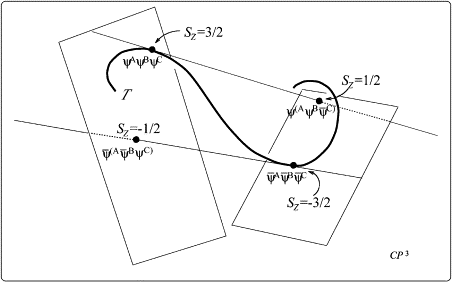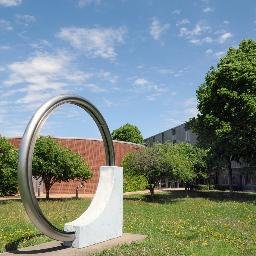Radio Frequency
Superconducting Technology
Exploring the convergence of particle accelerator technology and quantum computing through superconducting RF systems
Superconducting Qubits
Artificial atoms operating at microwave frequencies
SRF Cavities
High-Q resonators with 2-second coherence times
Quantum Control
Precise microwave pulses for quantum gate operations and readout
Radio frequency (RF) superconducting technology, pivotal in particle accelerators, is extensively utilized in quantum computing for controlling and reading out superconducting qubits, which are artificial atoms operating at microwave frequencies. This involves generating precise microwave pulses for quantum gate operations and employing high-quality factor superconducting resonators and parametric amplifiers for sensitive qubit state measurement.
Key Applications
Qubit Control
Precise microwave pulses for quantum gate operations
State Readout
High-fidelity measurement using parametric amplifiers
Quantum Memory
Long-coherence SRF cavities for information storage
Foundations of Superconducting Qubits and RF Control
Historical Development
1957-1962: Theoretical Foundations
BCS theory and Josephson's prediction of the Josephson effect laid the groundwork for understanding superconducting phenomena [455].
1998-1999: First Qubits
The Cooper Pair Box was realized in 1998, with the first demonstration of quantum coherent superposition in 1999 at NEC Labs, Japan [379, 455].
2006: Transmon Revolution
The transmon qubit design from Yale University significantly reduced charge noise sensitivity, leading to substantially longer coherence times [379, 429].
Qubit Types Comparison
| Qubit Type | Key Principle | Frequency | Advantages |
|---|---|---|---|
| Transmon | Shunted CPB (EJ/EC ≫ 1) | 3-6 GHz | Good coherence, reproducible |
| Fluxonium | JJ + large inductance | <1-3 GHz | Very long coherence, high anharmonicity |
| Flux Qubit | Persistent current states | 1-10 GHz | Tunable, strong dipole moment |
| Cooper Pair Box | Discrete Cooper pairs | 3-6 GHz | Conceptual simplicity |
Circuit Quantum Electrodynamics (cQED)
The cQED framework describes the interaction between superconducting artificial atoms (qubits) and quantized electromagnetic fields confined within superconducting microwave resonators. This is the cornerstone of modern superconducting quantum computing [114], [287].
Key Features:
- • Quantum bus for coherent energy exchange
- • Dispersive regime for QND readout
- • Purcell protection for enhanced coherence
- • Multi-mode interaction capabilities

RF Superconducting Components in Quantum Computing
Superconducting Resonators
Superconducting resonators and cavities are indispensable components serving as interfaces for qubit control, readout, and inter-qubit coupling. These structures confine microwave photons with very low loss, characterized by their high quality factor (Q-factor) [84, 103].
SQUIDs for Control
Superconducting Quantum Interference Devices (SQUIDs) are pivotal for qubit frequency tuning and control. The RF SQUID's effective Josephson energy can be modulated by applied magnetic flux [90, 240].
Recent Innovation:
Scalable scheme using RF SQUIDs to modulate qubit transition frequency with single square wave pulses, reducing control cables from ~3n to ~log₂(3n) + 1 [1].
Parametric Amplifiers for Quantum-Limited Readout
Ultra-Low Noise
Approaching quantum limit of adding only half a photon of noise
High Gain
Gain > 20 dB with large bandwidth (tens to hundreds of MHz)
Cryogenic Operation
Operating at millikelvin temperatures closest to qubits
Applications of Accelerator-Derived RF Technology
High-Q SRF Cavities
Fermilab researchers have demonstrated coherence lifetimes of up to two seconds for quantum states stored in SRF cavities [71, 149].
Qudit Computing
SRF cavities enable qudit-based quantum computing with d-dimensional quantum systems (d>2), offering compact information encoding [54, 56].
Single 9-cell SRF cavity + 1 transmon = 100+ qubit-equivalent QPU
Advanced Materials
SRF research has yielded 3-5 times improvement in transmon coherence times via niobium surface encapsulation [56].
SRF Cavity Performance for Quantum Applications
Key Advantages:
- • Exceptionally long coherence times (up to 2 seconds)
- • Natural platform for qudit encoding
- • Reduced hardware complexity
- • Leverages decades of accelerator R&D
Research Focus:
- • Multi-mode cavity optimization
- • Integration with transmon ancillas
- • Surface treatment improvements
- • Scalable architectures
Qubit Control and Readout Techniques
Microwave Pulse Generation
Precision Requirements
Quantum gate fidelity is extremely sensitive to microwave pulse characteristics: frequency, amplitude, phase, and duration [151, 211].
Advanced Pulse Shaping
Dispersive Readout
Quantum Non-Demolition (QND) Measurement
The qubit state is inferred by probing a coupled cavity, where the resonance frequency shifts by χ (dispersive shift) depending on the qubit state [147, 227].
Microwave tone at cavity resonance frequency
Qubit state modulates phase/amplitude
Amplified and demodulated at room temperature
Cryogenic RF Engineering Challenges
Thermal Management
Signal Integrity
Key Research Institutions and Collaborations

Fermilab (SQMS Center)
Leading SRF technology application to quantum computing through the Superconducting Quantum Materials and Systems Center. Focus on qudit-based quantum computing using 3D SRF cavities with coherence times up to 2 seconds [147, 194].
Key Achievements
- • 2-second coherence in SRF cavities
- • Compact control electronics development
- • Multi-qudit processor architecture
- • World's largest dilution refrigerator "Colossus"
Research Focus
- • Transmon-SRF cavity integration
- • Advanced materials (ZrNb(CO) films)
- • Quantum memory applications
- • Scalable control systems

CERN Quantum Technology Initiative
Leveraging decades of SRF expertise from particle accelerators for quantum technologies. From Nb-coated Cu cavities for LEP to advanced surface treatments and materials characterization [33, 34].
Contributions
NIST and Industry Leaders
NIST Innovations
Single Flux Quantum (SFQ) Control
Digital pulse control with >99.5% gate fidelity [274]
Cryogenic RF Switches
High-throughput testing and calibration systems
Quantum Voltage Standards
Josephson Arbitrary Waveform Synthesizers
Industry & Academia
Future Trends and Challenges
Improving Qubit Coherence
RF Engineering Solutions
Decoherence Sources
Scalability Challenges
Wiring Bottleneck
IBM's Osprey (433 qubits) required over 500 RF lines, straining cryogenic infrastructure [324].
Multiplexing Solutions
- • Frequency multiplexing for control/readout
- • Time-domain multiplexing for control functions
Cryogenic Integration
- • Cryogenic CMOS controllers at 4K
- • Advanced packaging (flip-chip, TSVs)
- • RF System-on-Chip solutions
Emerging Architectures and Error Correction
Novel Qubit Designs
Lower frequencies, high anharmonicity, millisecond coherence
Intrinsic protection against noise sources
SRF cavity-based multi-level quantum systems
Quantum Error Correction
The Path Forward
The future of RF superconducting technology in quantum computing lies in the seamless integration of materials science, device engineering, and RF/microwave technology to overcome current limitations and unlock the full potential of large-scale quantum computation.